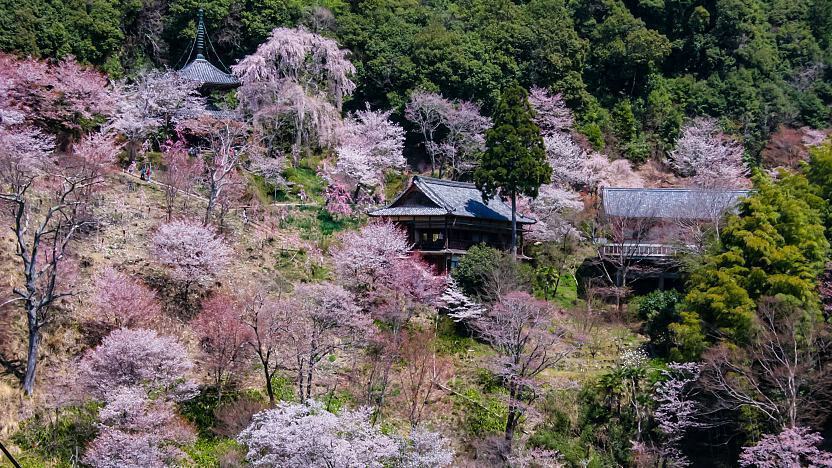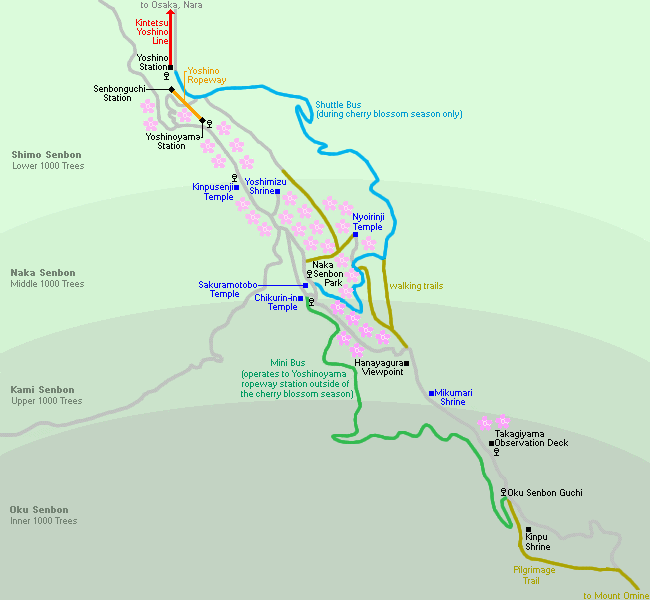
Originally established in the 10th century, Nyoirinji Temple (ö@łėŚųÄø) is a quiet, medium sized temple of the Jodo sect of Japanese Buddhism. Set apart from Yoshino's other sites on the mountain slope opposite the town, Nyoirinji was where Emperor Go-Daigo worshipped after transferring his capital to Yoshino during the era when Japan had two competing Imperial Courts (1336-1392). Emperor Go-Daigo eventually died in Yoshino and his and his wife's mausoleums are located along the forested slope just above the temple grounds.
Nyoirinji also has other structures including a tahoto style pagoda and a treasure house. The treasure house displays mandala, religious objects and artifacts from the Emperor Go-Daigo's court. Also on display are several paintings depicting scenes of Kusunoki Masatsura, Go-Daigo's loyal retainer, making a final prayer at Nyoirinji before departing to his eventual death defending the emperor from the rivaling Northern Court forces. Kusunoki and other defenders inscribed their names and a poem on the temple door, which is also on display.

Getting there and around
Nyoirinji Temple lies a little ways away from the majority of Yoshino's sites on the opposite slope of the valley. It can be reached on foot in about 45 minutes from the upper station of the Yoshino Ropeway (Yoshinoyama Station), or in about 20 minutes from the Nakasenbon Koen Bus Stop halfway up the mountain.
Alternatively, it is a 30 minute walk between Yoshino Station and the temple along a small mountain road that travels along the floor of the valley.
How to get to and around Yoshino

Hours and Fees
Hours
8:30 to 17:00 (during cherry blossom season)
Closed
Admission
Questions? Ask in our forum.


